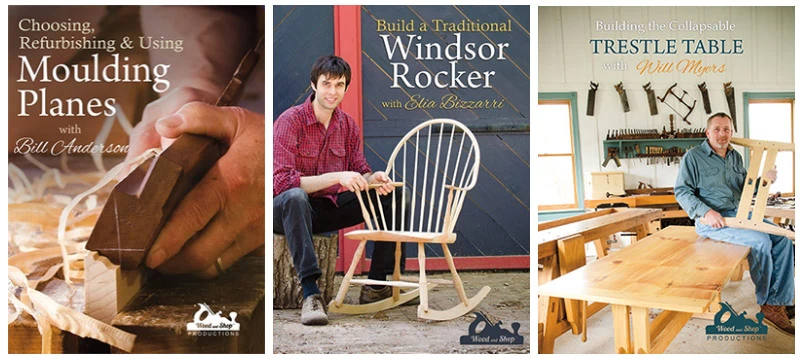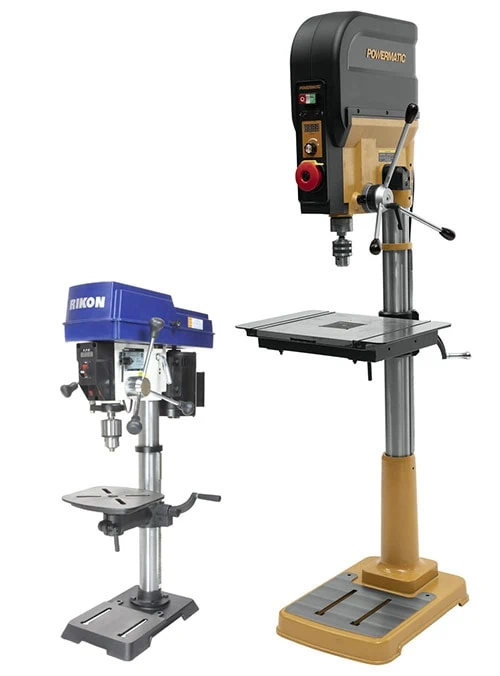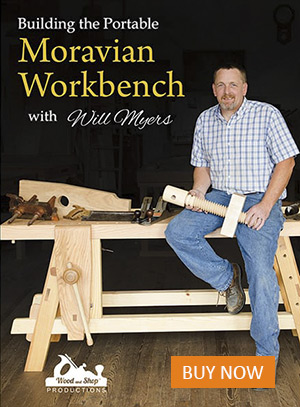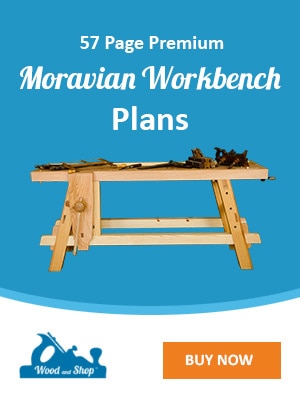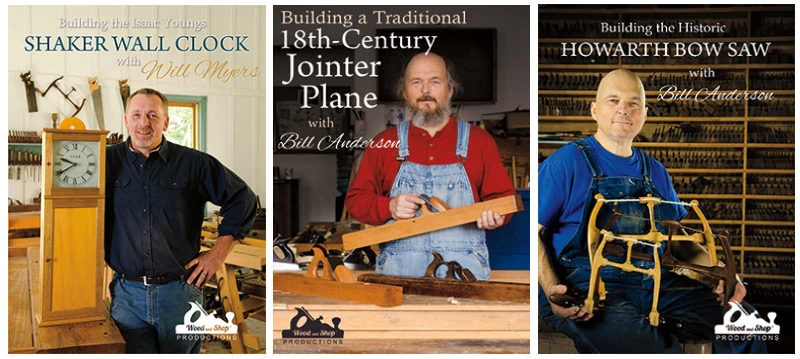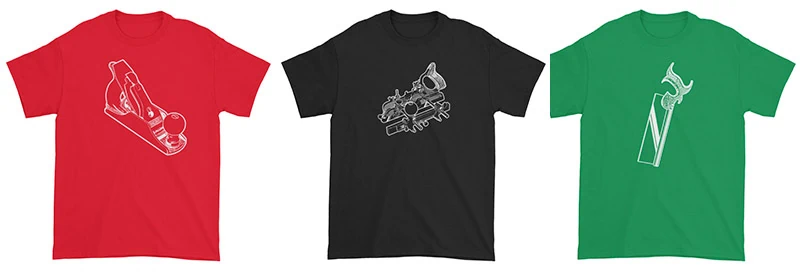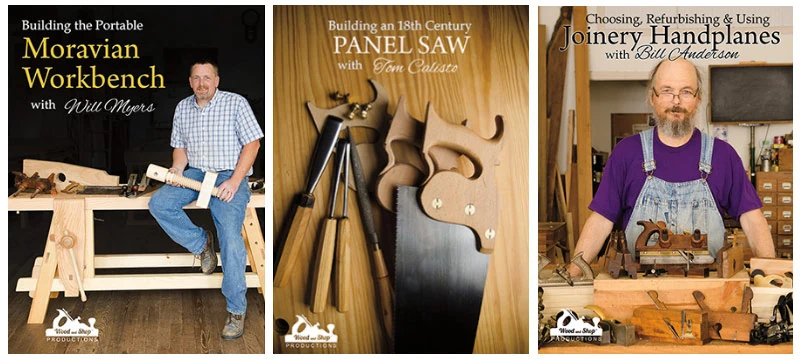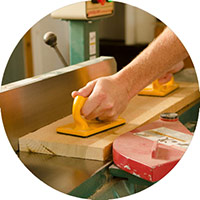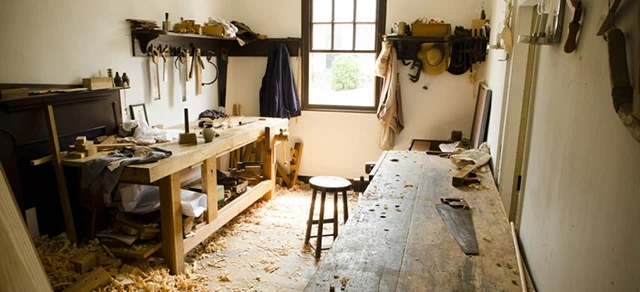How to Choose the Best Drill Press for Woodworking
Which is the Best Drill Press? Which are the Best Drill Bits? Joshua Shares Advice on What to Look for When Buying a Woodworking Drill Press and Drill Bits.
By Joshua Farnsworth | Updated Mar 02, 2022
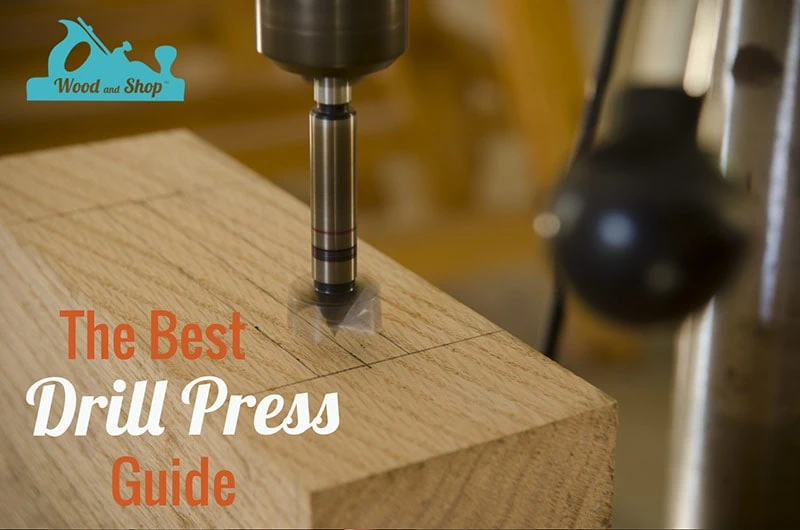
How to Choose the Best Drill Press for Woodworking

Which is the Best Drill Press? Which are the Best Drill Bits? Joshua Shares Advice on What to Look for When Buying a Woodworking Drill Press and Drill Bits.
By Joshua Farnsworth | Updated Mar 02, 2022
In this article I’ll help you choose the best drill press for the money, and for your workshop, whether you’re a beginner or an experienced woodworker.
How to Choose the Best Drill Press for Woodworking
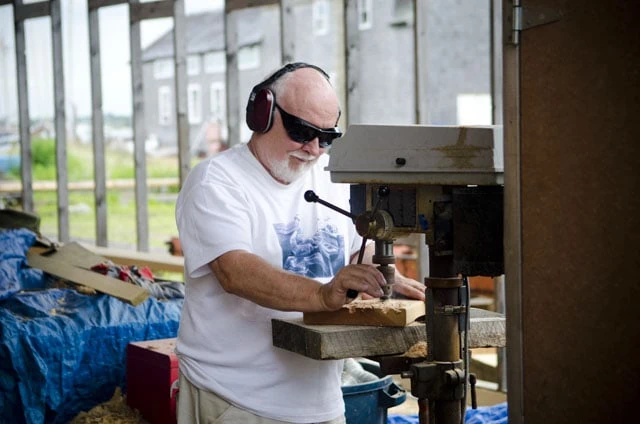
What is a drill press? A drill press is powered by a motor that turns internal belts, which in turn turns a spindle and chuck that grip a drill bit. The spinning bit drills or bores a hole in wood, metal, and other materials. A drill press is another power tool that a lot of woodworkers don’t like to go without, even woodworkers who love using hand tools. I’m included in this group. And finding the best drill press can be a challenge. That’s why I’m here to help!
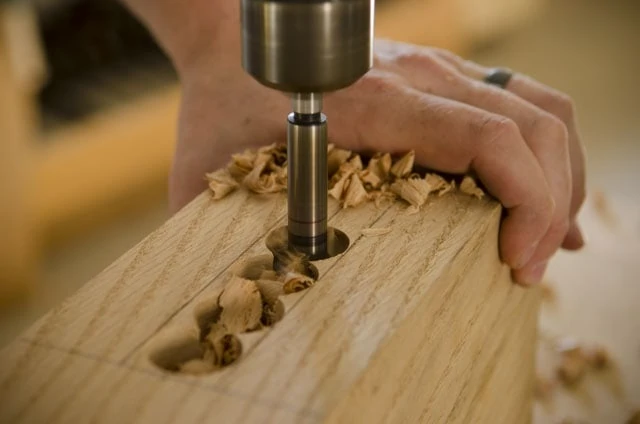
In addition to drilling precise holes in wood and metal, I mostly use my drill press to bore waste out of large mortises. Not even a hollow chisel mortiser does a better job than my drill press at removing waste from large mortises. I then use wood chisels to square up the mortise walls. In my woodworking school a drill press is often used for making woodworking hand tools, especially for drilling precise holes in a hand saw handle for hand saw nuts.
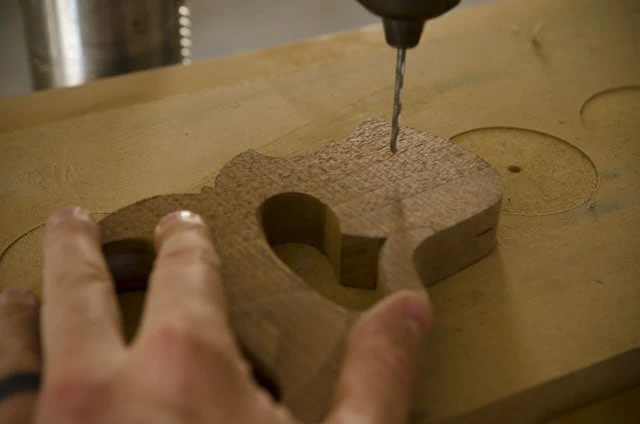
Features of the Best Drill Press?
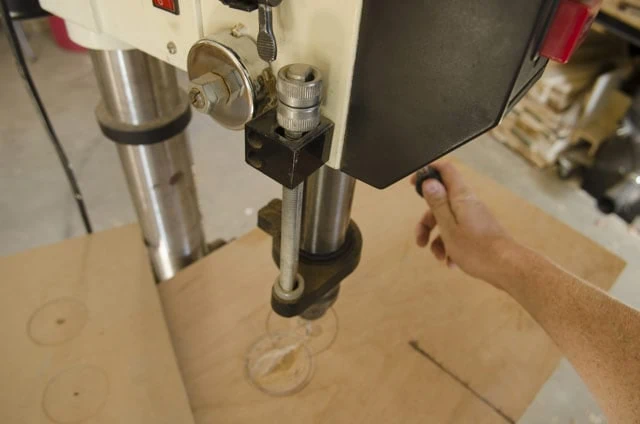
What are some features you should look for when you’re trying to find the best drill press on the market? Here are a few important features to consider when buying a drill press for woodworking:
1. Floor Drill Press vs. Bench Drill Press:
Drill presses come in both a bench drill press (i.e. portable drill press) or a free-standing floor drill press.
I happen to prefer a floor drill press in the range of 16-20-inches, rather than a bench drill press, because I want more drilling power, stability, and flexibility for boring larger mortises in larger pieces of wood. The floor drill presses also have larger tables and larger distance between the chuck and the post, allowing me to work on large pieces of wood. This was a huge benefit when I built 8 additional workbenches for my woodworking school, with approximately 105 mortises bored out on my floor drill press, which is a JET drill press (a bunch of other mortises had to be chopped by hand). But if your space is really limited, you can check out some of the best bench drill press options here at WoodCraft.
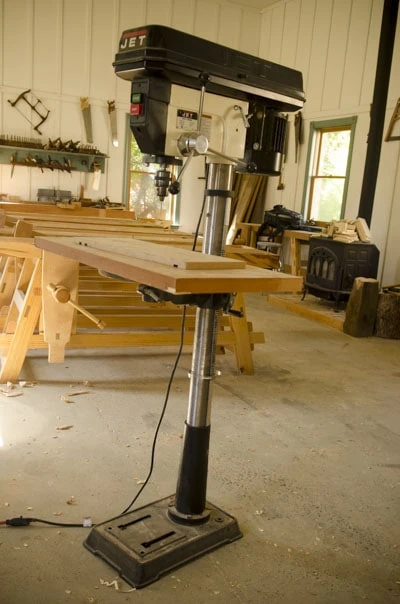
2. Drill Press Swing:
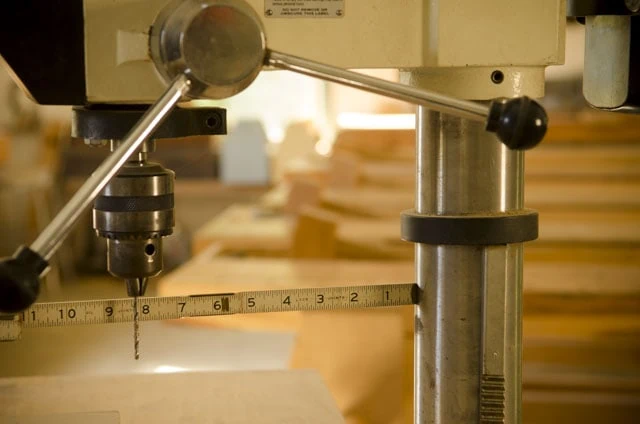
When shopping for a woodworking drill press, the title will include a size, for example: “JET® 16-1/2″ Floor Drill Press Model JDP-17MF“. The 16-1/2” measurement is referred to as the “swing”. The drill press swing is found by measuring from the center of the chuck (where the drill bit is held) to the front of the big metal post (that holds the drill press up), multiplied by 2. This tells you the largest diameter piece of wood that you can use and still drill a hole in the center. The distance between my chuck and post is 8-1/4″, so multiplying it by 2 = 16-1/2″. This gives me a lot of space. Benchtop drill press models usually run from 10-inches to 12-inches (occasionally up to 15-inches), which I find to be a little small for a lot of my projects.
3. Drill Press Quill Stroke / Spindle Travel:
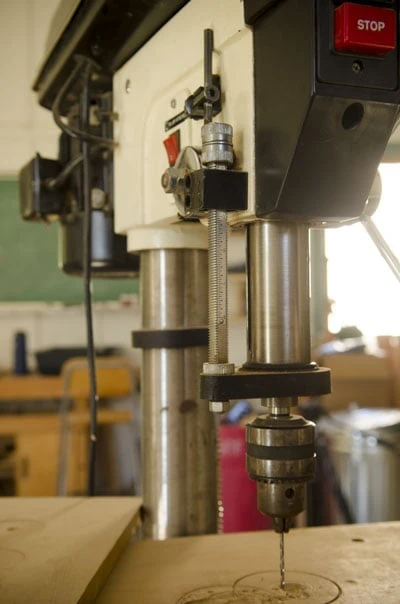
The quill stroke is the distance that the chuck and drill bit can travel downward when turning the handle all the way. In other words, it’s how far your spindle can move downward before it bottoms out. As a woodworker, you should eliminate any drill press from consideration that doesn’t have a quill stroke longer than 4-inches. A longer quill stroke allows you to bore your Forstner bit or auger bit down into a deep mortise.
4. Drill Press Table Tilt
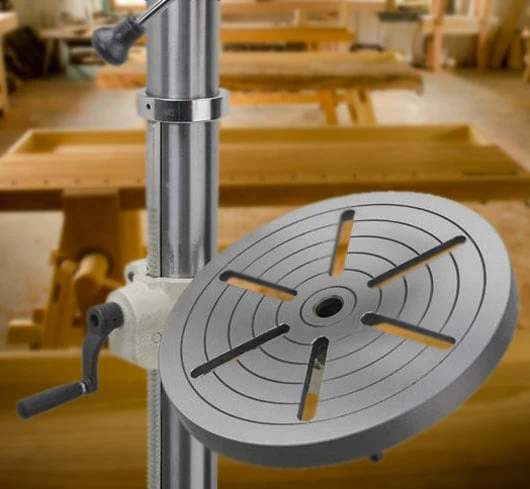
Look for a drill press table that has a bed that tilts to at least a 45 degree angle, left and right. Some tables tilt in all four directions for complex angles. A tilting table is helpful for boring angled mortises, and especially helpful if you ever decide to make Windsor chairs.
5. Other Drill Press Features to Consider:
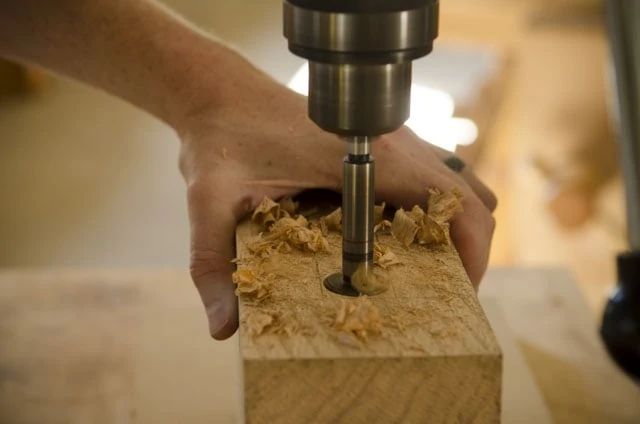
Other features, like lasers, quick-adjust depth stops, and variable speed adjustment are nice, but not necessary, especially if you’re on a tight budget. Some models made larger tables for woodworkers (as opposed to small tables for machinists), but I wouldn’t spend extra on a large table, as most woodworkers add an auxiliary table anyway. And most of the woodworking drill presses will have enough different speeds for the different materials you plan to drill. Print this chart so you can know what speed to set your drill press to for different bits and woods.
The Best Drill Press for Woodworking
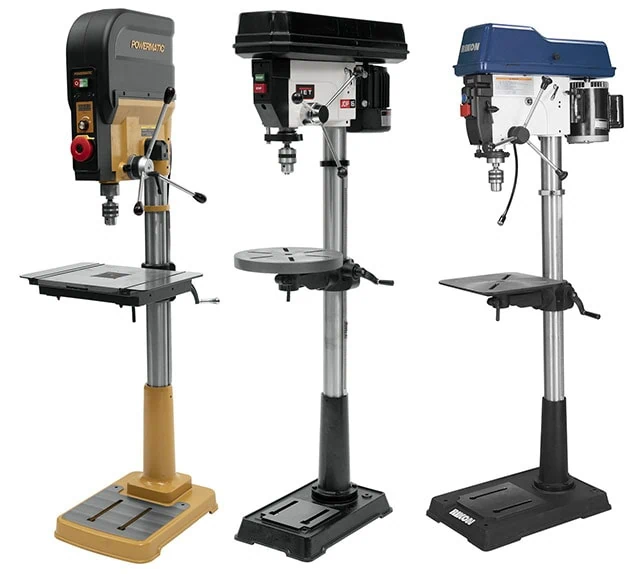
A number of years ago I purchased a used JET® 16-1/2″ Floor Drill Press Model JDP-17MF from a local furniture maker who was going out of business. It was manufactured in 2004, and I love this drill press. For me it’s the best drill press. It’s a drill press made specifically for woodworkers, rather than for machinists. This model is still being made (as of 2019). Much of my drill press is built of heavy cast iron, which adds to its stability. It has a strong 3/4HP motor and 16 speeds for flexibility when using different types of wood. I’ve bored large 2-inch holes with a Forstner bit in 2-inch thick white oak and maple, with no problem or belt slippage.
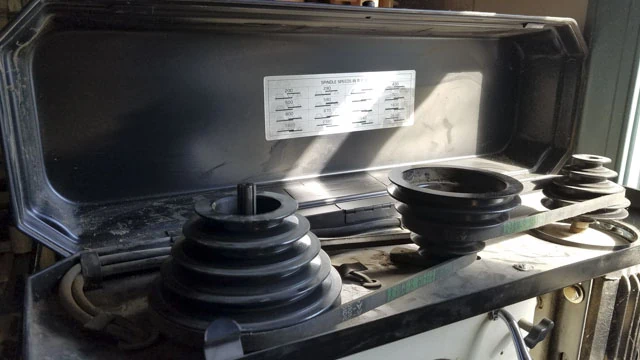
Most top drill press makers have good machines, so don’t hesitate to look at other brands. But when comparing models, just make sure that the features cater to woodworking, rather than machining.
Here are some top woodworking drill presses that meet the above three criteria:
- JET 16-1/2-inch JDP-17MF Floor Drill Press : This is the drill press that I own. click here to check prices and read reviews >>>
- Delta 18-900L 18-Inch Laser Drill Press: This drill press won a prestigious award as the best woodworking drill press in a Fine Woodworking Magazine drill press test. click here to check prices and read reviews >>>
- RIKON 30-217 1.5 hp VS Drill Press: This drill press has an impressive 6-inches of spindle travel (i.e. quill stroke) a much stronger motor (1.5HP), and quick adjusting variable speed. It looks like a great drill press. click here to check prices and read reviews >>>
- JET JDP-20MF 20-Inch Floor Drill Press: This is the big brother to the drill press that I own. click here to check prices and read reviews >>>
- PORTER-CABLE 8-Amp 12-Speed Floor Drill Press: This drill press won the best value award in the above-mentioned drill press test. The only downside is some customers have reported excessive vibration, so if you buy it, make sure you can easily return it. You can find the user manual here. This drill press is available at Lowe’s hardware stores around the country. click here to check prices and read reviews >>>
- Grizzly G7948 – 20″ Floor Drill Press: This drill press has a very powerful 1.5HP motor and larger swing of 20″. The Amazon reviews don’t show how good this drill press is, but there are more reviews at Grizzly’s website that show how good of a drill press it is. click here to check prices and read reviews >>>.
- General International 75-510 Variable Speed 20″ Floor Drill Press: General International makes quality tools, but some people have found customer service difficult to reach. This drill press has a large swing and a 4 3/4″ quill stroke. You can find the user manual here. Also you can click here to check prices and read reviews >>>
- SHOP FOX M1039 20-Inch Drill Press: Shop Fox has good customer service, but not incredible manufacturing standards. This drill press is affordable for the specs that you get (strong 1.5HP motor, 20″ swing, 4-3/4″ spindle travel, etc.) but has had mixed reviews due to some manufacturing QC flaws. click here to check prices and read reviews >>>
- Grizzly G7947 – 17″ Floor Drill Press: This drill press has a decent sized sweep, an acceptable spindle travel (4-3/4″), and a very powerful 1.5HP motor. click here to check prices and read reviews >>>
- Click here to compare a variety of drill presses and reviews at WoodCraft
- Click here to compare a variety of drill presses and reviews at Rockler Woodworking
- Click here to compare a variety of drill presses and reviews at Amazon
Also, here’s a “big name” drill press that you should probably steer clear of due to manufacturing problems:
- Powermatic PM2800B 1792800B Drill Press: Powermatic tools have been long known for their high quality. However, buyers have complained that this drill press is showing signs of poor quality control, including excessive vibration, runout (where the drill bit wobbles), defective chucks, and loose arbors. Hopefully Powermatic is taking this drill press back to the drawing board. Click here to read the reviews >>>
Buying Drill Bits for a Drill Press
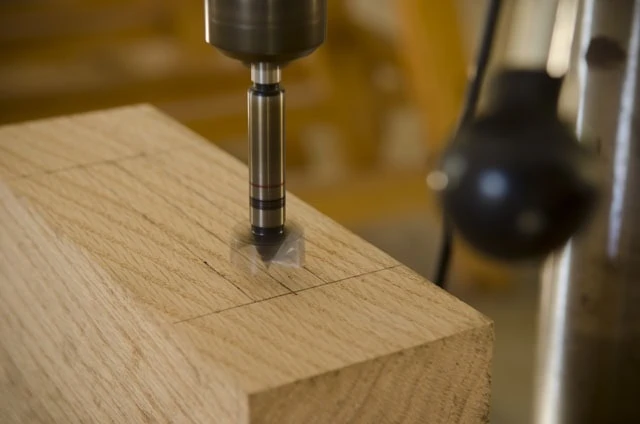
Buying quality drill bits for your drill press is an important consideration. Poor quality drill bits, or the wrong type of drill bits for a drill press can make messy and/or inaccurate holes, which kind of defeats the purpose of buying a nice drill press.
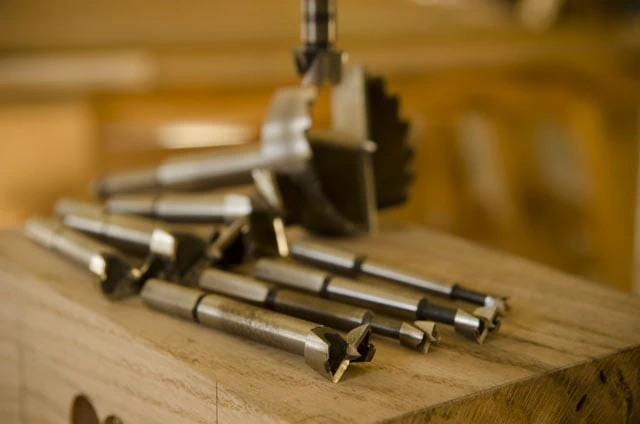
For most of my drill press work I use a Forstner bit set. A good quality Forstner bit will give a very clean, flat-bottom hole that is ideal for boring out mortises. If you set the depth stop on your drill press, then a Forstner bit will give you a uniformly flat-bottom mortise. The edges of the holes are much more crisp and clean when using a Forstner bit. The sharp rim of a Forstner drill bit allows you to make overlapping holes with your drill press (for when you’re making a mortise) and also allows you to drill at angles.
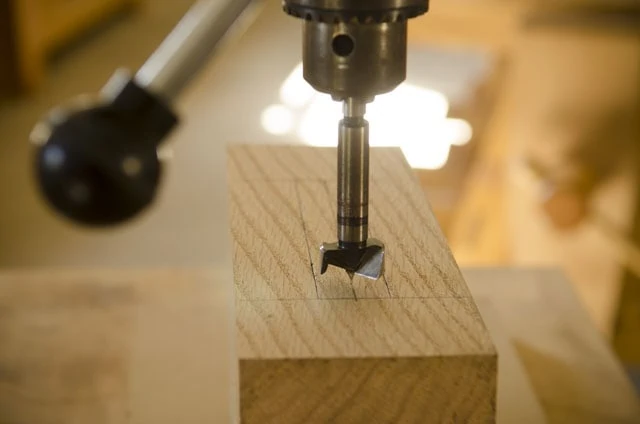
What is the Best Forstner Bit Set?
So what is the best Forstner bit set? In my opinion, the best Forstner bit set for the money (which are widely available) is made by Fisch, Famag, Porter-Cable, Freud, Irwin, and Bosch. See below for links to these Forstner bit sets. Getting a Forstner bit set with a suitable number of Forstner bits is important, because I always have different sized holes or mortises to bore. All of the below Forstner bits will work great, but the Fisch and Freud Fortner bits have the wavy-style rims (like a serrated knife) which give a compromise between stability and speed. The knife-edge rims have a continuous piece of metal around the edge. This type of bit cuts slightly cleaner holes, but is slower and generates more heat. The saw-tooth rims are faster, but don’t cut as cleanly, and can wander when entering the wood. You can see prices & read reviews for each steel Forstner bit set here:
- Fisch 7-Piece Forstner Bit Set
- Famag Bormax 6-piece Forstner Bit Set
- Porter-Cable 14-Piece Forstner Bit Set
- Freud 7 Pcs. Precision Shear Forstner Drill Bit Set
- Irwin Tools 8-piece Marples Forstner Bit Set
- Freud 4 Pcs. Precision Shear Forstner Bit Set
- Bosch 16-Piece Wood Forstner Bit Set
*I didn’t include carbide tipped sets, because I haven’t noticed much performance difference for the extra money.
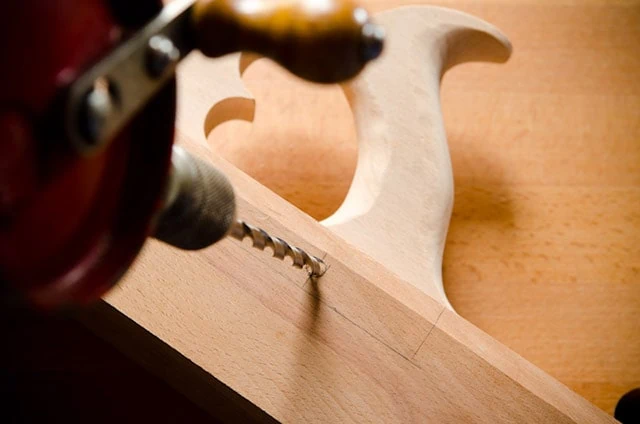
Aside from Forstner bits on the drill press, I do a lot of my boring and drilling with hand braces and egg beater hand drills, unless I have repetitive or high-precision holes to drill or bore. You can see my “Hand Drills, Braces & Drill Bits buyer’s guide” here >>>
Conclusion
I hope this guide on choosing the best drill press has been helpful! Please leave a comment below if you have any questions. In my next woodworking power tool guide I’ll talk about choosing the best power jointer…
TOOL GUIDE SHORTCUTS:
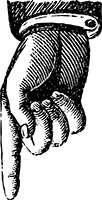
HAND TOOL BUYER’S GUIDES
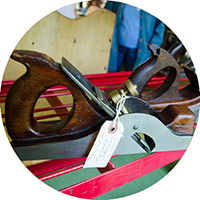
- Intro to Buying Woodworking Hand Tools
- Workbench & Tool Storage
- Layout, Marking, & Measuring Tools
- Handplanes
- Handsaws
- Chisels
- Sharpening & Honing Supplies
- Mallets & Hammers
- Hand Drills, Braces, & Bits
- Tools for Curved Work
- Tools for Green Woodworking
- Woodworking Clamps, Gluing & Fasteners
- Tools for Wood Carving
- Products for Wood Finishing, Sanding & Scraping
- Wood Turning Tools & Lathes

